Maryborough Self-Guided Town Walk

The Maryborough district was first settled as early as 1840 by the Scottish Simson brothers, who began sheep farming in the district. When gold was found, the population quickly grew, by 1856 there were up to 53,000 people living in the district. Maryborough was named after Commissioner James Daly's home in Ireland.
The Jajowurrong Aborigines called the area Tuaggra. The Simson brothers arrived in the 1840's and took up a great tract of land extending from Castlemaine to Avoca. Donald Simson built Charlotte Plains homestead north of Carisbrook on Deep Creek.
Maryborough Self-Guided Town Walk Map

1. Maryborough Railway Station
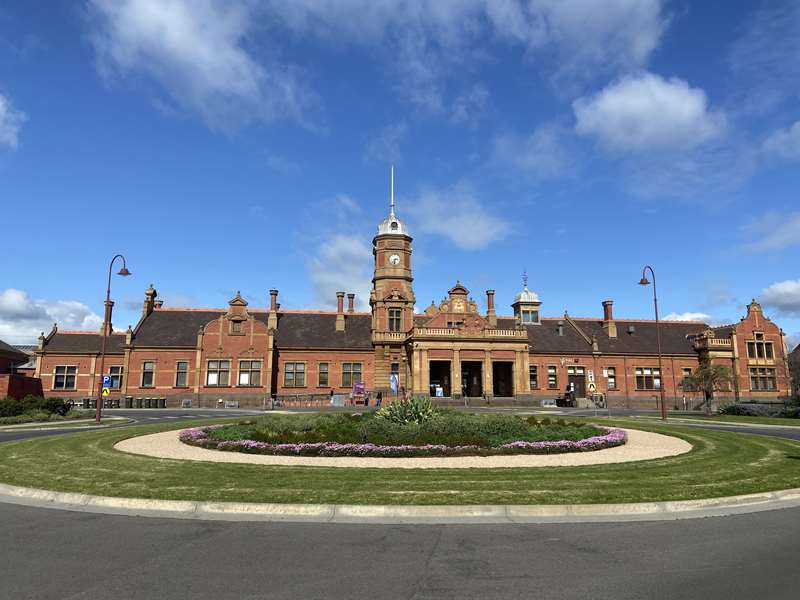
The magnificent old station was built in 1890. This building was remembered by Mark Twain as 'a station with a town attached'. It has tessellated tiles from Cawkwells in Malvern - they also laid the tiles in Parliament House in Melbourne - and beautiful timber ceilings. Enjoy a coffee or a light lunch in the Station Cafe.
2. Phillips Botanical Gardens
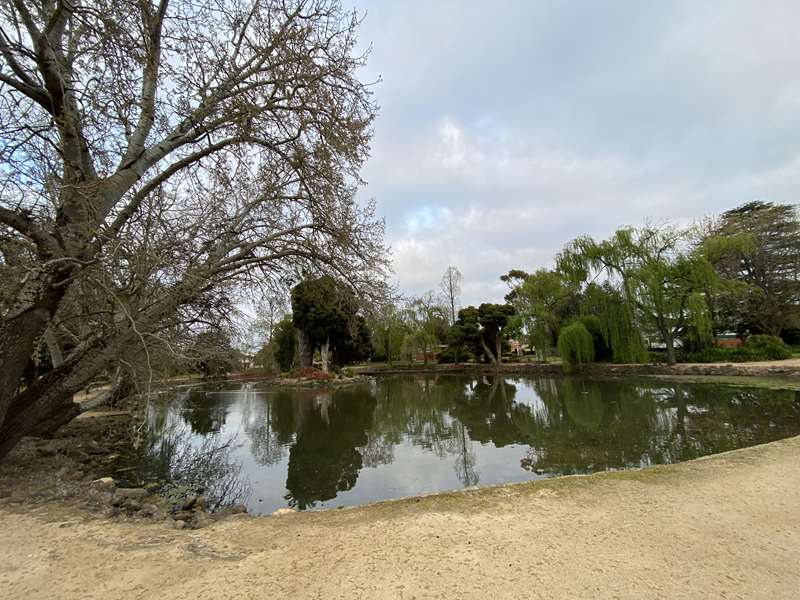
The gardens were established in 1874. Originally cleared as a dam, with the water used for fire-fighting and town use. Lack of water was a problem in Maryborough's early days. Prisoners from the local gaol built a bowling green - which was later transferred to High St. There are many exotic trees, including the Bunya Bunya pine. These have large cones weighing up to 8 kilograms, which usually fall in March/April.
3. The Bull & Mouth Hotel
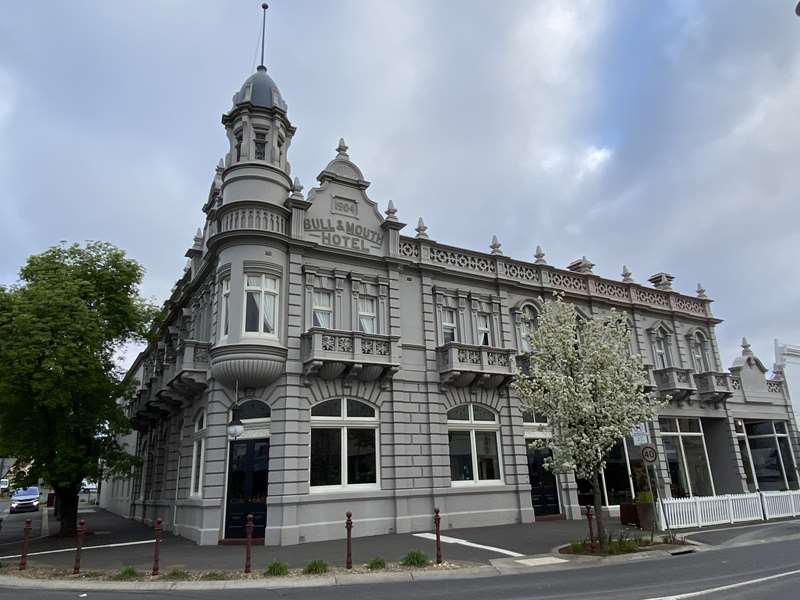
Originally built in 1854, the hotel was demolished in 1904 and then rebuilt. The hotel was one of the first in Maryborough. On the opposite corner is the AMP Building, built in 1926 by Messrs Farnsworth and Sparks. Note the figures on top of building, with the symbols Amicus Ray Incerta ("a certain friend in uncertain times").
4. McLandress Square
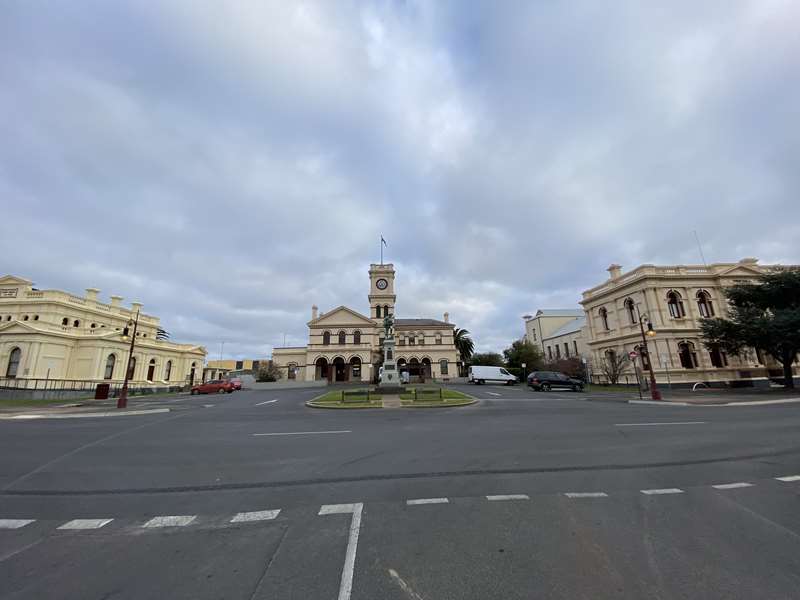
Arguably one of the finest clusters of civic buildings in country Victoria. The Court House opened in 1893; the large pavings of blue stone were obtained from the Castlemaine Quarries, some weighing over a ton. The Post Office was built in 1878 of first class stone mined from McCallum's Creek and the clock tower added in 1879. The original Town Hall was built in 1858 and superseded by the present building in 1887. It was built by George Clayfield, who was the builder of the Daylesford Town Hall. The fountain in front of the Town Hall was built as a memorial to Corporal Gerald Wilkinson, who was the first soldier from Maryborough to die in the Boer War.
5. Old Fire Station One

One of the town's earliest buildings built in 1861. The existing tower was the third one on the site and constructed in 1888. Engine sheds were added early in the 20th Century. The Central Goldfields Art Gallery is now housed here. In 1982 the Fire Brigade moved to a new site in Napier St.
6. Tren du Bourg Hall
The hall is named after a former High School Principal. This building consists of a simple decorated parapet facade and string line course moulding. Built by the ALP in 1927, it became an assembly hall for the Maryborough High School later in the century. It is now owned by the Genesis Church.
7. Court of Mines

It was built by A. Amos & Co in 1858 and was first used as a Court House, then as a Mining Board Office. This is the oldest public building still standing in Maryborough.
8. Maryborough Hospital
The original building of 1855 was replaced with a gracious brick hospital between1858 and 1867. The 1960's saw the demolition of the 1882 verandah and balcony and the modern extensions were made to the front of the hospital.
9. The Old Library

Corner of Tuaggra and High Streets. Originally the Maryborough Free Library & Reading Room 1880. Extended in 1897 to include its unusual facade. It's twin parapet is unique. Charles Walker was the architect.
10. Mandeville Coffee Palace
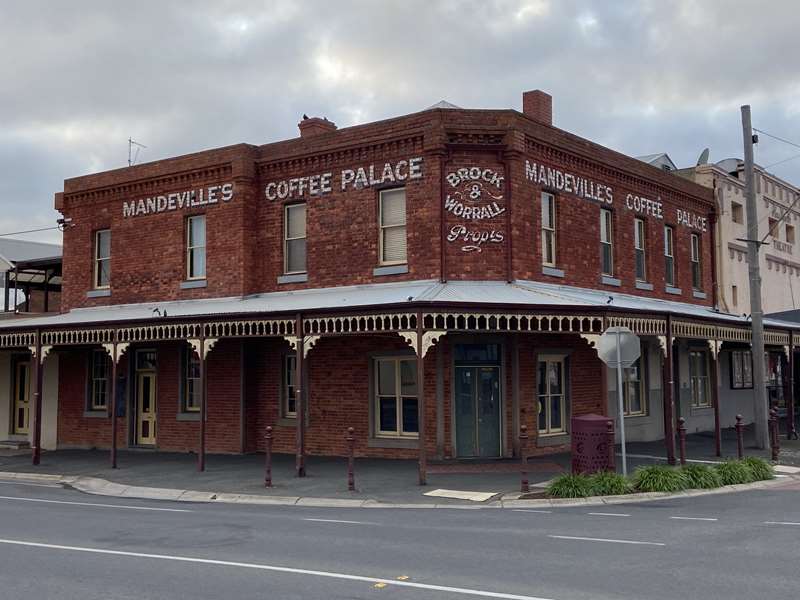
Two storey red brick building formerly built as the Yorkshire Hotel / Brewery in 1863. Delicensed in the later half of the 1800's to be taken up as a Coffee Palace by Mrs Mandeville.
11. The Paramount Cinema

This theatre built in 1926. This Art-Deco style building houses a twin cinema.
12. Central Goldfields Shire Offices
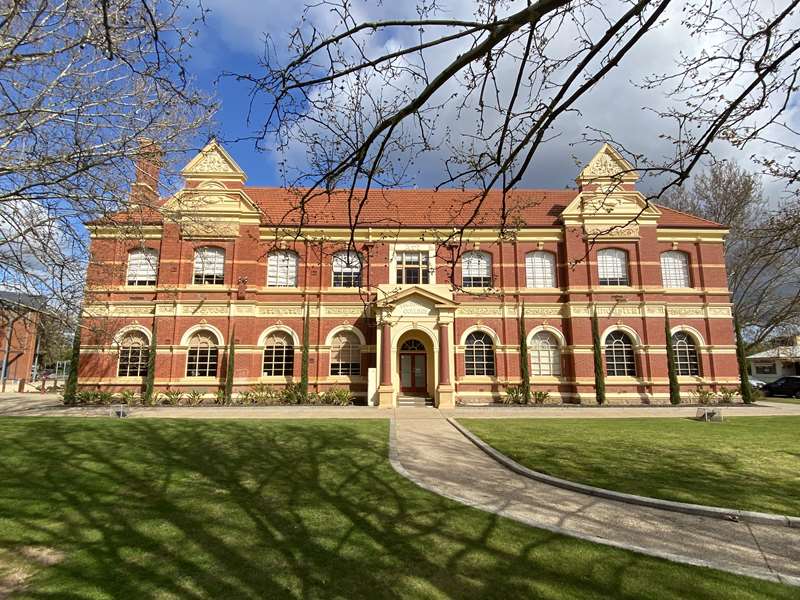
Formerly The School of Mines. The foundation stone was laid in 1890 and the east wing was opened the fol-lowing year. In 1903 it was renamed as Maryborough Technical School, becoming the District Secondary College in 1992. In 2008, it became the home for The Central Goldfields Shire Council.
A. Bristol Hill Tower
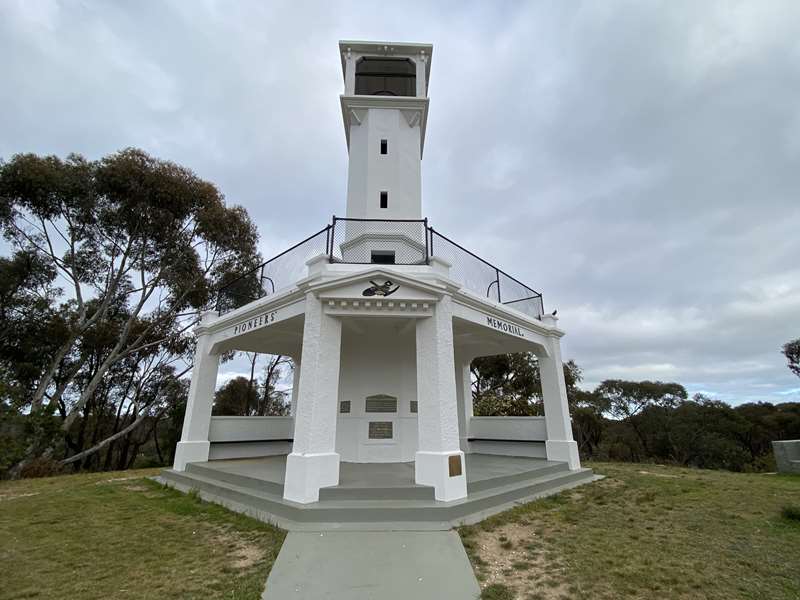
The foundation stone was laid in late 1932 and built with unemployment relief funds in 1933. The spiral staircase was built utilising bluestone from the old gaol buildings. Incrusted in the bottom wall are plaques of poems from Henry Lawson. The first official cemetery for Maryborough, from 1854 -1859, is located at the bottom of Bristol Hill. There were up to 400 graves on the site of which around 80 have been named on a plaque at the front of the cemetery.
B. Old Maryborough Gaol
Originally set on 5 acres, it opened in 1861 at a cost of 10,000 pounds, comprising Gaol, warders' quarters, guard's towers plus yard and governor's residence. The Gaol closed in 1902 but was used as a lock up until 1914. It was dismantled in 1933. Only the warders' and governor's residences can be seen today. They are privately owned.
C. Princes Park and Lake Victoria
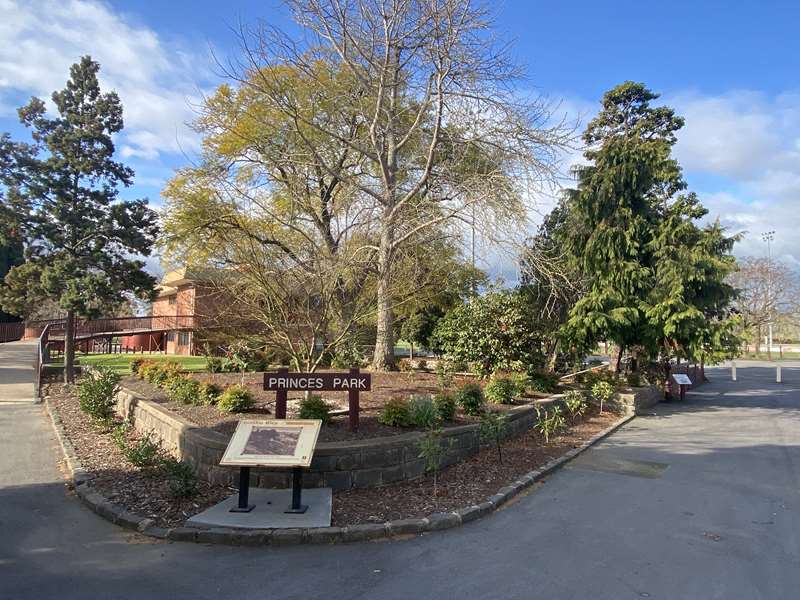
The lake was constructed by prisoners from the local gaol last century. The Grand Stand was built in 1895. The Band Rotunda was built to commemorate Maryborough's Jubilee, and designed by Mr H.N. Phillips.
D. Maryborough Flour Mill (not currently open)
Established in early 1881, the Flour Mill was one of the town's longest employment industries. Changing ownership many times, the company was sold to a big Melbourne based consortium in 1980 and shut down . one year short of the hundred years.
E. Worsley Museum and Cottage
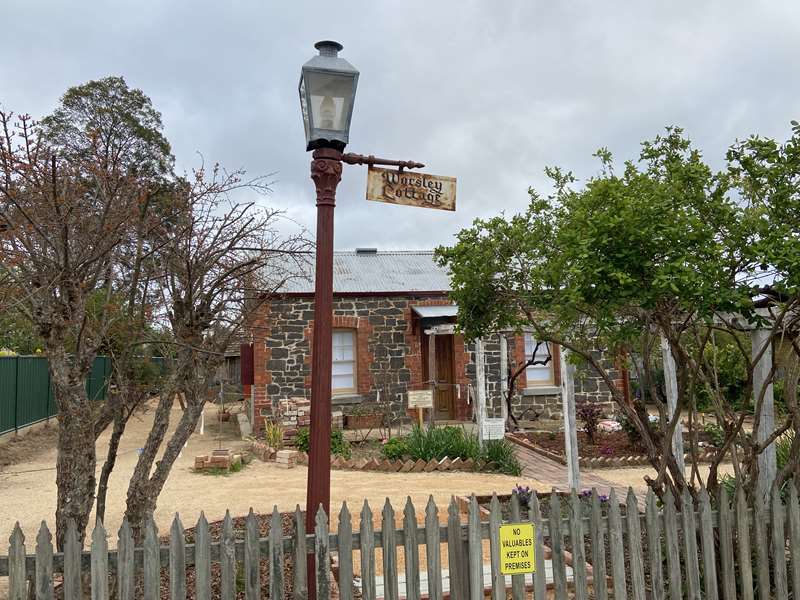
Built by Arthur Worsley (stonemason) in 1894 for his family. The bluestone and sandstone building began with 2 rooms and a detached kitchen. The two middle rooms were completed in 1908. It is the home of Maryborough-Midlands Historical Society.
F. Olympic Swimming Pool

Opened by Sir Frank Beaurepaire in 1941. Remarkably intact, it features an Art Deco entrance pavilion and is on the Victorian Heritage Register.
G. Maryborough Knitting Mills
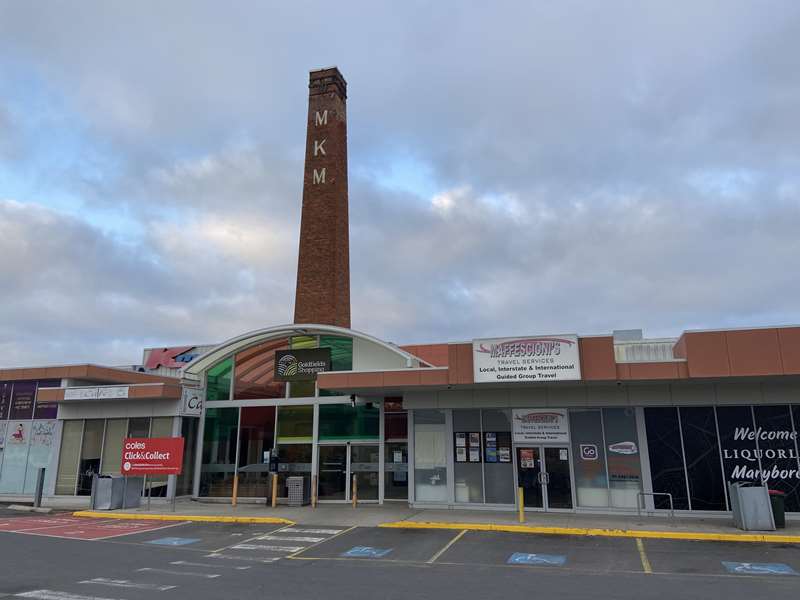
Original site of Maryborough Knitting Mills which operated between 1923 and 1996. It's brick chimney survives.
H. St Augustine's Church
The spire of the old church was retained when the church was re-built. Part of the present school was built in 1948 and expanded in the 1970s.
I. The Crameri
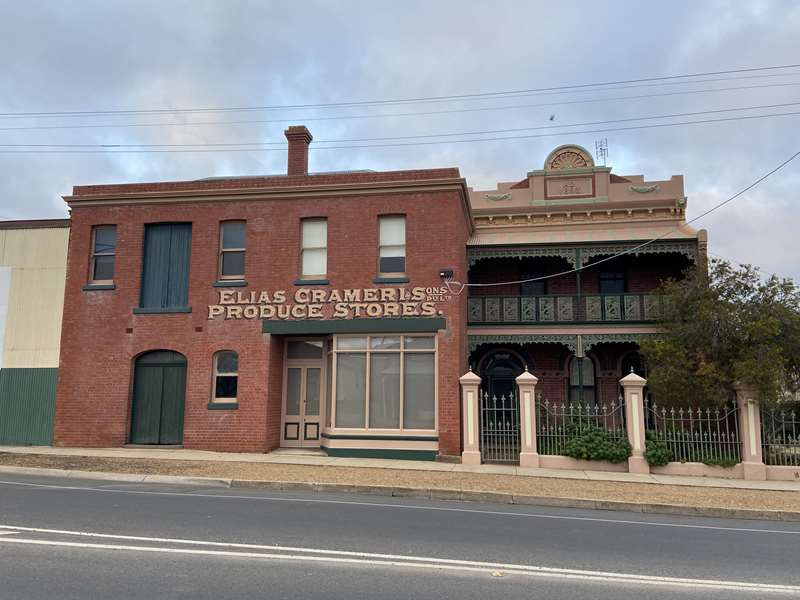
Building Built in 1893 at the cost of 2000 pounfd, this building was owned by Elias Crameri. Elias was a gentleman who did quite well during the gold rush days. The building is still owned by the Crameri family.
Photos:
Location
52C Alma Street, Maryborough 3465 Map
Web Links
→ Maryborough Self-Guided Tours Guide (PDF)









